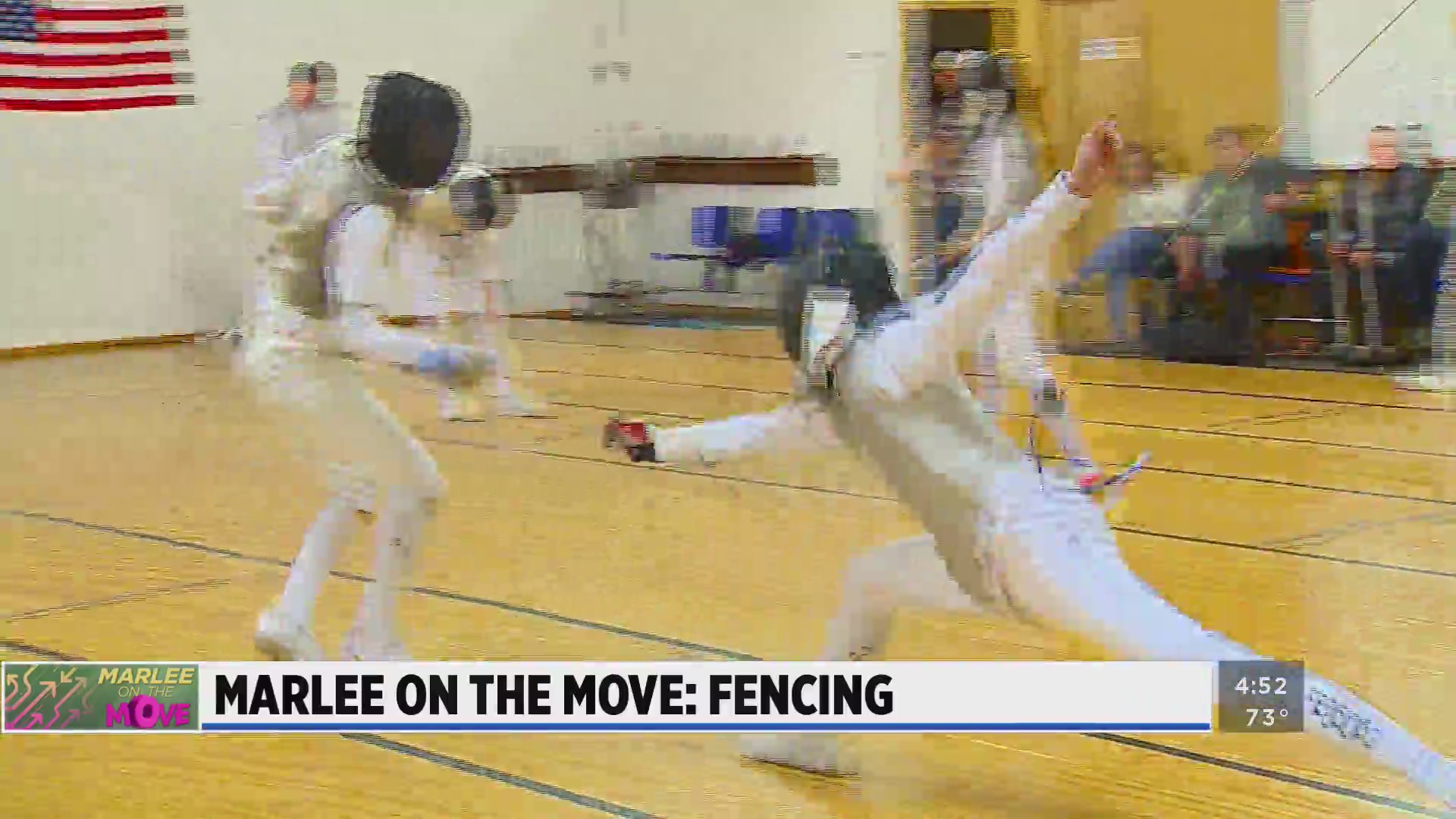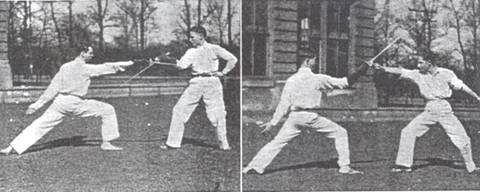Fencing is a sport that requires precision, agility, and strategy. It is a combat sport that involves two opponents using swords to score points by making contact with their opponent’s body. Fencing has been around for centuries and has evolved into a highly technical and strategic sport. To be successful in fencing, one must master the essential techniques and strategies of the sport. In this blog post, we will discuss the basic fencing moves, advanced techniques, footwork, maneuvers, strategies, drills, common mistakes, weapons, and ways to improve your fencing moves. We will also take a look at some famous fencing moves in history. So let’s dive into the world of fencing and learn how to master its moves.
Basic Fencing Moves

The basic fencing moves are the foundation of the sport. These moves are used to attack, defend, and counterattack. They require proper technique and execution to be effective. Here are some of the most common basic fencing moves:
Lunge
The lunge is the most fundamental move in fencing. It is used to attack an opponent by extending the front leg and lunging forward while keeping the back leg straight. The arm holding the sword extends forward as well, allowing the fencer to reach their opponent. The lunge is a quick and powerful move that requires good balance and coordination.
Tips for a perfect lunge:
- Keep your back straight and your core engaged.
- Push off from your back foot to generate power.
- Keep your front knee aligned with your toes.
- Extend your arm fully to reach your opponent.
- Use your non-sword hand for balance.
Parry
The parry is a defensive move used to deflect an opponent’s attack. It involves using the sword to block or redirect the opponent’s blade away from the target area. There are different types of parries, each with a specific purpose. The most common parries are:
- Circular parry: This involves making a circular motion with the sword to deflect the opponent’s blade.
- Semi-circular parry: This is similar to the circular parry but with a smaller motion.
- Quarte parry: This is a diagonal parry from high to low on the outside line.
- Sixte parry: This is a diagonal parry from low to high on the inside line.
Tips for a perfect parry:
- Keep your arm relaxed and use your wrist to make quick movements.
- Use your non-sword hand to support your sword arm.
- Keep your eyes on your opponent’s blade to anticipate their attack.
- Use your entire body to move the sword, not just your arm.
- Practice different types of parries to become proficient in all of them.
Advanced Fencing Techniques
Once you have mastered the basic fencing moves, it is time to move on to more advanced techniques. These techniques require more skill and precision and can give you an edge over your opponent. Here are some advanced fencing techniques that you should learn:
Feint
A feint is a deceptive move used to trick your opponent into thinking you are going to attack in one direction when you actually attack in another. It involves making a small movement with your sword to draw your opponent’s attention and then quickly changing direction to attack. A well-executed feint can catch your opponent off guard and give you an advantage.
Tips for a perfect feint:
- Make the initial movement look convincing.
- Keep your body and feet still while making the feint.
- Use your non-sword hand to distract your opponent.
- Be quick and precise with your change of direction.
- Practice with a partner to perfect your timing and execution.
Disengage
The disengage is a move used to avoid your opponent’s blade and attack from a different angle. It involves moving your sword in a circular motion to avoid your opponent’s parry and then attacking from the opposite side. The disengage requires good hand-eye coordination and timing to be effective.
Tips for a perfect disengage:
- Keep your arm relaxed and use your wrist to make quick movements.
- Use your non-sword hand to support your sword arm.
- Be aware of your opponent’s blade and anticipate their parry.
- Practice with a partner to improve your timing and execution.
- Use the disengage sparingly, as it can become predictable if overused.
Mastering Fencing Footwork

Footwork is an essential aspect of fencing. It allows fencers to move quickly and efficiently on the strip and execute their moves effectively. Good footwork also helps with balance and coordination, which are crucial in fencing. Here are some essential footwork techniques that every fencer should master:
On Guard Position
The on guard position is the starting position in fencing. It is the foundation of all footwork and should be mastered before moving on to more advanced techniques. To get into the on guard position, stand with your feet shoulder-width apart, with your dominant foot slightly ahead of the other. Bend your knees and keep your back straight. Your sword arm should be extended forward, and your non-sword hand should be placed on your hip.
Tips for a perfect on guard position:
- Keep your weight evenly distributed between both feet.
- Keep your knees bent and your body relaxed.
- Keep your sword arm extended but not locked.
- Keep your non-sword hand on your hip for balance.
- Practice holding the on guard position for extended periods to build endurance.
Advance and Retreat
The advance and retreat are two basic footwork techniques used to move forward and backward on the strip. The advance involves taking a step forward with your front foot, followed by your back foot. The retreat is the opposite, where you take a step back with your back foot, followed by your front foot. These techniques are used to maintain distance from your opponent and set up attacks or defenses.
Tips for a perfect advance and retreat:
- Keep your feet shoulder-width apart.
- Use small, quick steps to move on the strip.
- Keep your knees bent and your body relaxed.
- Practice with a partner to improve your timing and coordination.
- Use these techniques in combination with other footwork techniques for more effective movement.
Essential Fencing Maneuvers

Fencing maneuvers are combinations of moves used to attack, defend, and counterattack. They require good technique, coordination, and timing to be executed correctly. Here are some essential fencing maneuvers that every fencer should know:
Riposte
The riposte is a counterattack made after successfully parrying your opponent’s attack. It involves quickly changing direction and attacking your opponent while they are off balance. The riposte is an effective way to score points and catch your opponent off guard.
Tips for a perfect riposte:
- Be quick and precise with your change of direction.
- Keep your body and feet still while making the riposte.
- Use your non-sword hand to support your sword arm.
- Anticipate your opponent’s attack and be ready to counter.
- Practice with a partner to improve your timing and execution.
Compound Attack
A compound attack is a series of feints and attacks used to confuse and deceive your opponent. It involves making multiple feints in different directions before finally attacking in a different direction. A well-executed compound attack can catch your opponent off guard and give you an advantage.
Tips for a perfect compound attack:
- Make each feint look convincing.
- Keep your body and feet still while making the feints.
- Use your non-sword hand to distract your opponent.
- Be quick and precise with your change of direction.
- Practice with a partner to perfect your timing and execution.
Fencing Strategies for Success

Fencing is not just about mastering moves and techniques; it also requires strategic thinking. A good fencer knows when to attack, defend, or counterattack. They also know how to read their opponent’s moves and anticipate their next move. Here are some strategies that can help you be successful in fencing:
Study Your Opponent
Before a match, take some time to study your opponent’s style and moves. Observe their footwork, attacks, and defenses. This will give you an idea of their strengths and weaknesses, which you can use to your advantage during the match.
Tips for studying your opponent:
- Watch videos of your opponent’s previous matches.
- Pay attention to their footwork and body movements.
- Take note of their favorite moves and strategies.
- Look for patterns in their attacks and defenses.
- Use this information to come up with a game plan for the match.
Be Patient
Patience is key in fencing. It is important to wait for the right moment to attack or counterattack. Rushing into an attack can leave you vulnerable to your opponent’s counterattack. Be patient and look for openings in your opponent’s defense before making your move.
Tips for being patient:
- Keep your on guard position and maintain distance from your opponent.
- Observe your opponent’s movements and look for openings.
- Stay calm and focused, even if your opponent is attacking aggressively.
- Be ready to react quickly when the opportunity presents itself.
- Practice patience in training to develop this skill.
Effective Fencing Drills
Drills are an essential part of any sport, and fencing is no exception. Fencing drills help improve footwork, coordination, timing, and technique. They also help fencers develop muscle memory, which is crucial in a fast-paced sport like fencing. Here are some effective fencing drills that you can incorporate into your training:
Footwork Drills
Footwork drills are designed to improve speed, agility, and coordination. These drills involve different footwork techniques such as advance, retreat, lunge, and change of direction. They can be done with or without a partner and can be modified to fit your specific needs.
Example of a footwork drill:
- Set up two cones on the strip, one at each end.
- Start at one cone and do a series of footwork techniques (advance, retreat, lunge, etc.) to the other cone.
- Once you reach the other cone, turn around and repeat the same footwork techniques back to the starting cone.
- Repeat for a set number of repetitions or for a set amount of time.
Target Practice Drills
Target practice drills are designed to improve accuracy and precision. These drills involve hitting specific targets on your opponent’s body, such as the chest, arm, or leg. They can be done with a partner or with a target dummy.
Example of a target practice drill:
- Have your partner stand in the on guard position with their sword arm extended.
- Use a foam noodle or a small stick as a target and have your partner hold it in their hand.
- Practice hitting the target with different moves, such as lunges, disengages, and feints.
- Switch roles and have your partner practice hitting the target while you hold it.
Common Mistakes in Fencing Moves
Like any sport, fencing has its fair share of common mistakes that beginners and even experienced fencers make. These mistakes can hinder your progress and affect your performance. Here are some common mistakes in fencing moves and how to avoid them:
Overextending on Lunges
One of the most common mistakes in fencing is overextending on lunges. This happens when a fencer extends their front leg too far, causing them to lose balance and become vulnerable to their opponent’s attack. To avoid this, make sure to keep your front knee aligned with your toes and use your back foot to generate power.
Not Using Your Non-Sword Hand
Another common mistake is not using your non-sword hand for balance and support. Your non-sword hand plays an important role in maintaining balance and making quick movements. Make sure to keep it on your hip or use it to distract your opponent during a feint or compound attack.
Being Too Predictable
Fencers often fall into the trap of being too predictable with their moves. This can happen when they rely on one or two favorite moves and use them repeatedly. Being predictable makes it easier for your opponent to anticipate your moves and counter them. To avoid this, practice a variety of moves and strategies and use them in different combinations.
Fencing Moves for Different Weapons
There are three main weapons used in fencing: foil, epee, and sabre. Each weapon has its own set of rules and techniques. Here are some fencing moves specific to each weapon:
Foil
The foil is a light and flexible weapon that requires precision and control. It is the most popular weapon in fencing and is used in both individual and team events. Some common moves in foil fencing include the fleche, the flick, and the beat attack.
Epee
The epee is a heavier and stiffer weapon compared to the foil. It is also the longest weapon, with a maximum length of 35 inches. In epee fencing, the entire body is a target, and points are scored by making contact with any part of the opponent’s body. Some common moves in epee fencing include the point-in-line, the disengage, and the stop-hit.
Sabre
The sabre is a fast and aggressive weapon that requires quick reflexes and good footwork. It is the only weapon where points can be scored with both the tip and the edge of the blade. Some common moves in sabre fencing include the cut-over, the parry-riposte, and the remise.
Improving Your Fencing Moves
To improve your fencing moves, you need to practice consistently and focus on specific areas that need improvement. Here are some tips to help you improve your fencing moves:
Practice with a Partner
Practicing with a partner is essential in fencing. It allows you to work on your timing, coordination, and technique while also simulating real match situations. Find a training partner who is at a similar skill level as you and practice together regularly.
Record and Analyze Your Matches
Recording your matches and analyzing them can help you identify areas that need improvement. Watch your matches with a coach or a more experienced fencer and take note of your strengths and weaknesses. This will help you come up with a plan to improve your skills.
Cross Train
Cross-training involves incorporating other sports or activities into your training routine. This can help improve your overall fitness, agility, and coordination, which are all important in fencing. Some sports that complement fencing include running, swimming, and yoga.
Famous Fencing Moves in History
Fencing has a rich history, and there have been many famous fencing moves that have been immortalized in books, movies, and art. Here are some of the most famous fencing moves in history:
The Touché
The touché is a term used in fencing to acknowledge a successful hit. It originated from the French word “toucher,” which means to touch. The touché has become synonymous with fencing and is often used in popular culture to represent a successful attack.
The En Garde Position
The en garde position is the starting position in fencing, and it has been depicted in many works of art throughout history. It is a classic pose that represents the elegance and precision of fencing.
The Disengage
The disengage is a move that has been used by fencers for centuries. It involves moving the sword in a circular motion to avoid an opponent’s parry and attack from a different angle. This move has been featured in many famous fencing matches and is still used by fencers today.
Conclusion
Fencing is a sport that requires dedication, skill, and strategy. Mastering its moves is essential for success in this highly technical and strategic sport. In this blog post, we discussed the basic fencing moves, advanced techniques, footwork, maneuvers, strategies, drills, common mistakes, weapons, and ways to improve your fencing moves. We also took a look at some famous fencing moves in history. Whether you are a beginner or an experienced fencer, practicing these techniques and strategies will help you become a master of fencing moves. So keep training, stay focused, and always strive to improve your skills. Happy fencing!